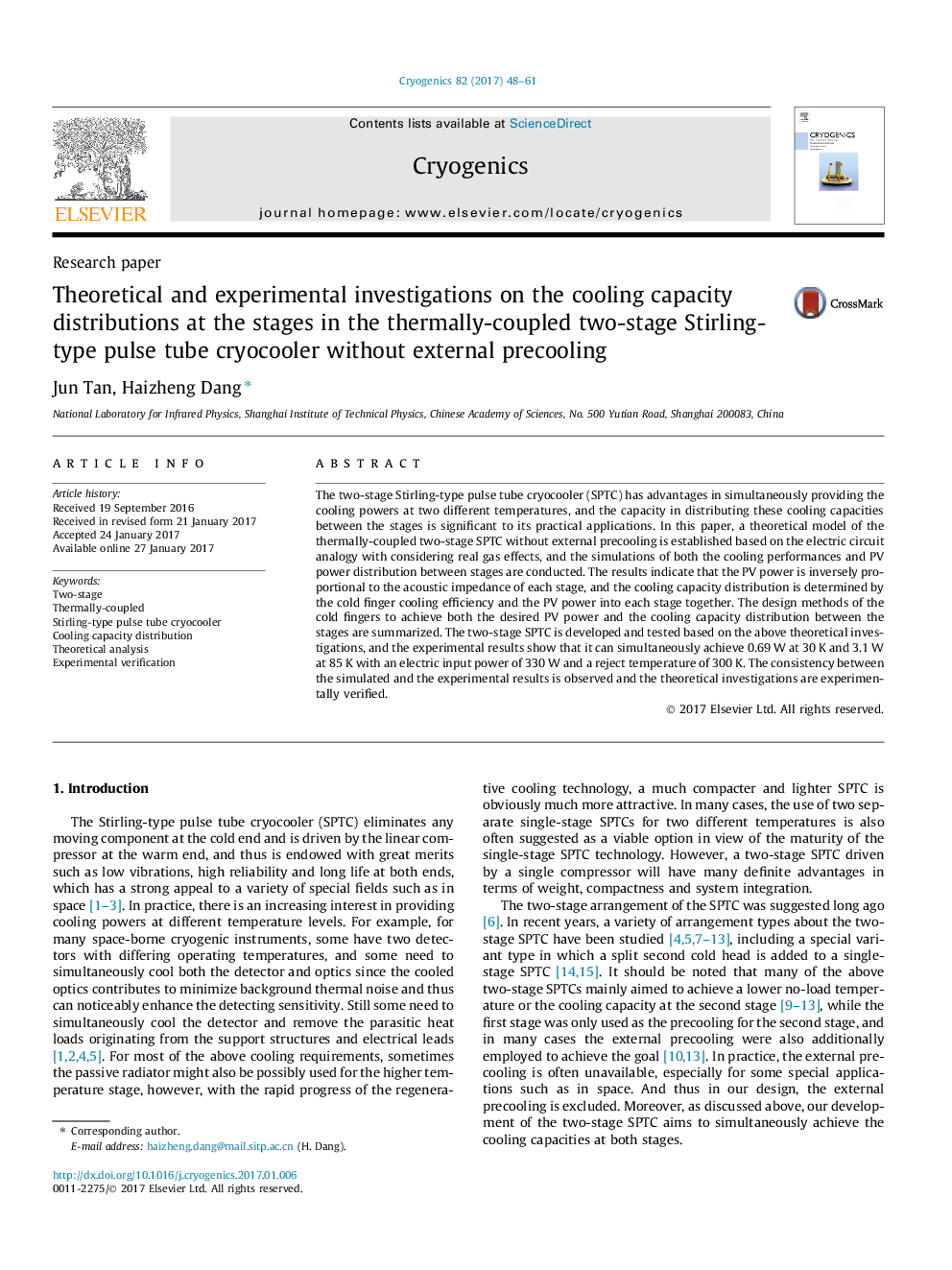| Article ID | Journal | Published Year | Pages | File Type |
|---|---|---|---|---|
| 5444153 | Cryogenics | 2017 | 14 Pages |
Abstract
The two-stage Stirling-type pulse tube cryocooler (SPTC) has advantages in simultaneously providing the cooling powers at two different temperatures, and the capacity in distributing these cooling capacities between the stages is significant to its practical applications. In this paper, a theoretical model of the thermally-coupled two-stage SPTC without external precooling is established based on the electric circuit analogy with considering real gas effects, and the simulations of both the cooling performances and PV power distribution between stages are conducted. The results indicate that the PV power is inversely proportional to the acoustic impedance of each stage, and the cooling capacity distribution is determined by the cold finger cooling efficiency and the PV power into each stage together. The design methods of the cold fingers to achieve both the desired PV power and the cooling capacity distribution between the stages are summarized. The two-stage SPTC is developed and tested based on the above theoretical investigations, and the experimental results show that it can simultaneously achieve 0.69Â W at 30Â K and 3.1Â W at 85Â K with an electric input power of 330Â W and a reject temperature of 300Â K. The consistency between the simulated and the experimental results is observed and the theoretical investigations are experimentally verified.
Related Topics
Physical Sciences and Engineering
Materials Science
Electronic, Optical and Magnetic Materials
Authors
Jun Tan, Haizheng Dang,
